5-CHLORO-2'-DEOXYURIDINE
Synonym(s):CldU
- CAS NO.:50-90-8
- Empirical Formula: C9H11ClN2O5
- Molecular Weight: 262.65
- MDL number: MFCD00006531
- SAFETY DATA SHEET (SDS)
- Update Date: 2025-12-19 17:28:17
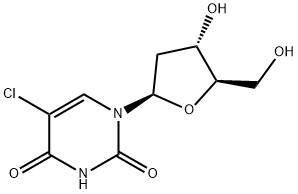
What is 5-CHLORO-2'-DEOXYURIDINE?
Description
5-Chloro-2''-deoxyuridine (CldU) is a thymidine analog that is readily incorporated, following phosphorylation, into newly synthesized DNA in place of thymidine. Like 5-bromo-2’-deoxyuridine and 5-iodo-2’-deoxyuridine, CldU can be detected immunologically in cells and tissues. CldU can also be added to cells or tissues sequentially with another thymidine analog to label temporally distinct populations. The insertion of thymidine analogs, including CldU, can significantly alter DNA processing and replication, so these analogs have also been used as mutagens, clastogens, and antiviral compounds.
Chemical properties
White Needles
The Uses of 5-CHLORO-2'-DEOXYURIDINE
5-Chloro-2'-deoxyuridine (CldU) is a thymidine analog that is readily incorporated, following phosphorylation, into newly synthesized DNA in place of thymidine. Like 5-bromo-2’-deoxyuridine and 5-iodo-2’-deoxyuridine, CldU can be detected immunologically in cells and tissues. CldU can also be added to cells or tissues sequentially with another thymidine analog to label temporally distinct populations. The insertion of thymidine analogs, including CldU, can significantly alter DNA processing and replication, so these analogs have also been used as mutagens, clastogens, and antiviral compounds.[Cayman Chemical]
The Uses of 5-CHLORO-2'-DEOXYURIDINE
A halogenated uridine derivative used in pharmaceutical compositions.
The Uses of 5-CHLORO-2'-DEOXYURIDINE
5-Chloro-2′-deoxyuridine (CldU) is used as a thymidine analog to study the miscoding potential of hypochlorous acid damage to DNA and DNA precursors. When used with antibody based immunofluorescent imaging, 5-Chloro-2′-deoxyuridine incorporation may be used in protocols to identify sites of DNA replication. CldU may be used as a labeling substrate in conjunction with other halogenated uridine labeling substrates such as iododeoxyuridine (IdU).
What are the applications of Application
5-Chloro-2′-deoxyuridine is a thymidine analogue
Biochem/physiol Actions
DNA labeled with 5-chloro-2′-deoxyuridine (CldU) serves as an effective tool to analyze and quantify DNA replication, repair, and recombination. CldU is a potent mutagen, clastogen, and toxicant. It is used as a thymidine analog and is found to alter the dNTP pools and might lead to cell-cycle arrest. CldU produces sister-chromatid exchange but has less response to ionizing radiation compared to other thymine analogs. 5-Chloro-2′-deoxyuridine (CldU) is used to study the miscoding potential of hypochlorous acid damage to DNA and DNA precursors. When used with antibody based immunofluorescent imaging, 5-Chloro-2′-deoxyuridine incorporation may be used in protocols to identify sites of DNA replication. CldU may be used as a labeling substrate in conjunction with other halogenated uridine labeling substrates such as iododeoxyuridine (IdU).
Properties of 5-CHLORO-2'-DEOXYURIDINE
| Melting point: | 176-179°C |
| Density | 1.5507 (rough estimate) |
| refractive index | 1.6500 (estimate) |
| storage temp. | -20°C |
| solubility | DMSO (Slightly), Methanol (Slightly), Water (Slightly) |
| pka | 7.73±0.10(Predicted) |
| form | Solid |
| color | White to Off-White |
| CAS DataBase Reference | 50-90-8(CAS DataBase Reference) |
Safety information for 5-CHLORO-2'-DEOXYURIDINE
| Signal word | Warning |
| Pictogram(s) |
 Exclamation Mark Irritant GHS07  Health Hazard GHS08 |
| GHS Hazard Statements |
H351:Carcinogenicity |
| Precautionary Statement Codes |
P202:Do not handle until all safety precautions have been read and understood. P280:Wear protective gloves/protective clothing/eye protection/face protection. P301+P312:IF SWALLOWED: call a POISON CENTER or doctor/physician IF you feel unwell. P308+P313:IF exposed or concerned: Get medical advice/attention. |
Computed Descriptors for 5-CHLORO-2'-DEOXYURIDINE
New Products
Indole Methyl Resin tert-butyl 9-methoxy-3-azaspiro[5.5]undecane-3-carboxylate Boc-His(Boc)-OH 2-CTC Resin 4-Chloro-7-tosy1-7Hpyrrolo[2,3-d]pyrimidine 5,7-Dibromo-1H-indole 2,5-dichloro-N-hydroxy-4,6-dimethylpyridine-3-carboximidamide 2,2-Dimethoxy-7-azaspiro[3.5]nonane hydrochloride 4-chloromethyl-5-methyl-1,3-dioxol-2-one (DMDO-Cl) R-2-BENZYLOXY PROPIONIC ACID 1,1’-CARBONYLDIIMIDAZOLE 1,1’-CARBONYLDI (1,2-4 TRIAZOLE) N-METHYL INDAZOLE-3-CARBOXYLIC ACID 4-((2-hydroxyethyl)thio)benzoic acid 1-(TERT-BUTOXYCARBONYL)-2-PYRROLIDINONE Methyl 6-methylnicotinate 3-Pyridineacrylic acid tert-Butyl carbazate TETRAHYDRO-2H-PYRAN-3-OL 2-((4-morpholinophenylamino) (methylthio) methylene) malononitrile 3-(4-morpholinophenylamino)-5-amino-1H-pyrazole-4-carbonitrile 2,4-dihydroxybenzaldehyde 1,3-Diethyl-1,3-Diphenylurea Methyl 2-methylquinoline-6-carboxylateRelated products of tetrahydrofuran


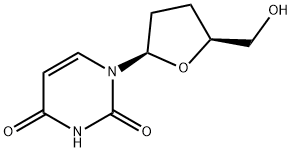
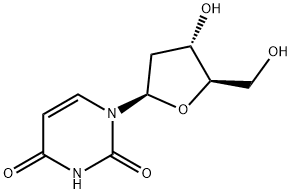
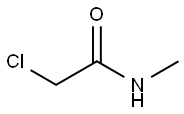

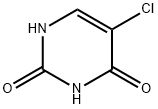

You may like
-
 5-Chloro-2′-deoxyuridine CAS 50-90-8View Details
5-Chloro-2′-deoxyuridine CAS 50-90-8View Details
50-90-8 -
 Pyridine 99.5% HPLC /UV SpectroscopyView Details
Pyridine 99.5% HPLC /UV SpectroscopyView Details
110-86-1 -
 Guanine , 99%View Details
Guanine , 99%View Details
73-40-5 -
 Piperazine Spot supply, best priceView Details
Piperazine Spot supply, best priceView Details
110-85-0 -
 Dibutyl PhthalateView Details
Dibutyl PhthalateView Details
84-74-2 -
 Imidazole Spot supply, competitive priceView Details
Imidazole Spot supply, competitive priceView Details
288-32-4 -
 Octadecyl 3-(3,5-di-tert-butyl-4-hydroxyphenyl)propionate 98% (GC)View Details
Octadecyl 3-(3,5-di-tert-butyl-4-hydroxyphenyl)propionate 98% (GC)View Details
2082-79-3 -
 Thiourea 99% ARView Details
Thiourea 99% ARView Details
62-56-6
